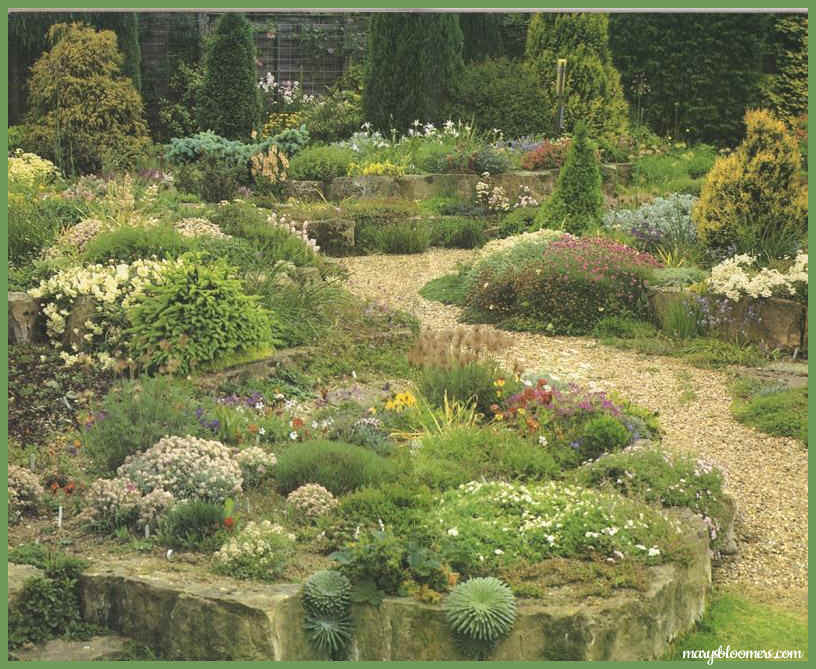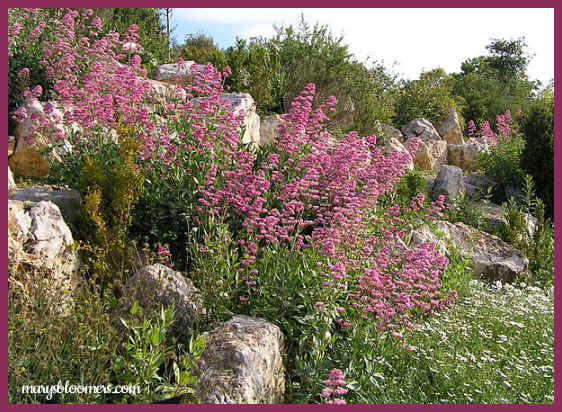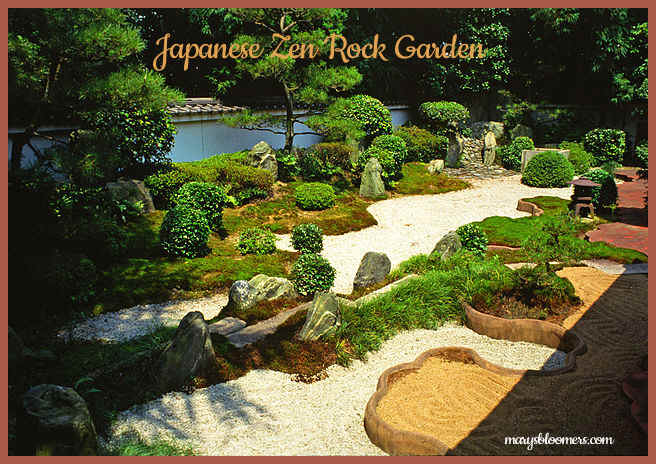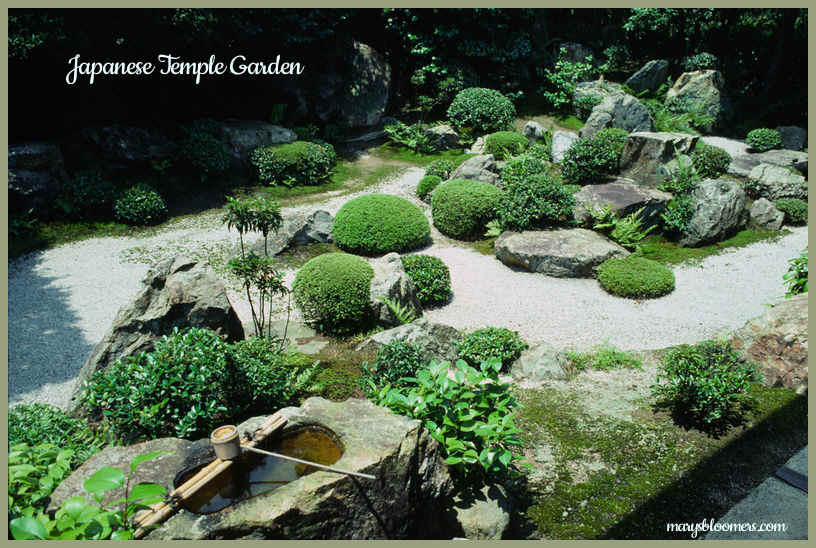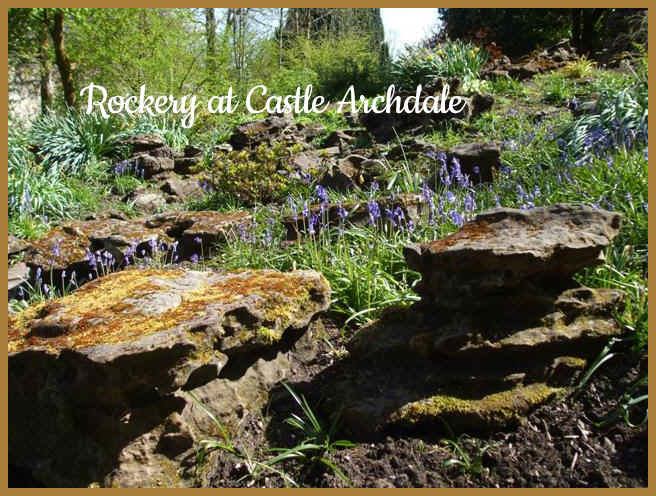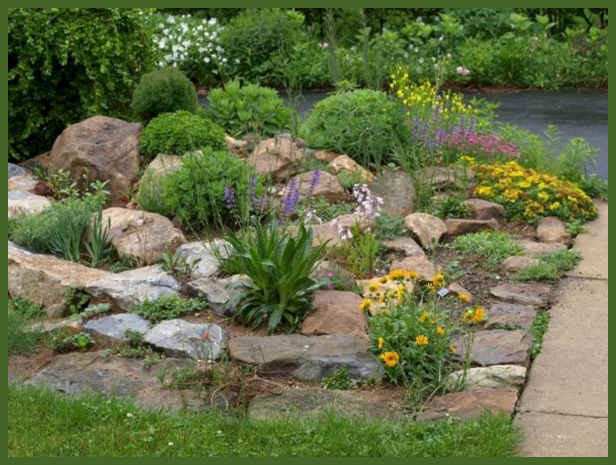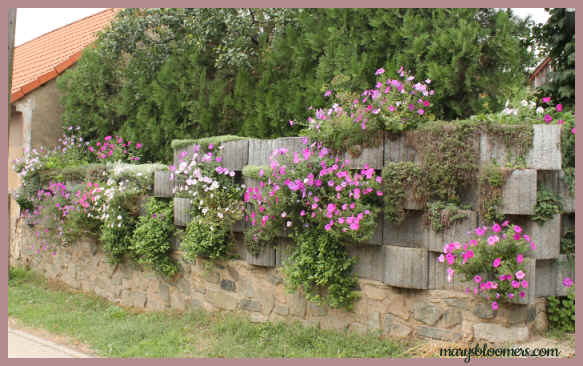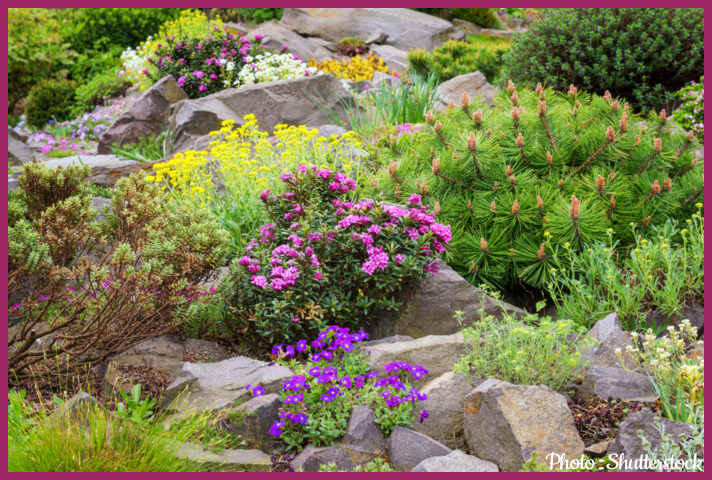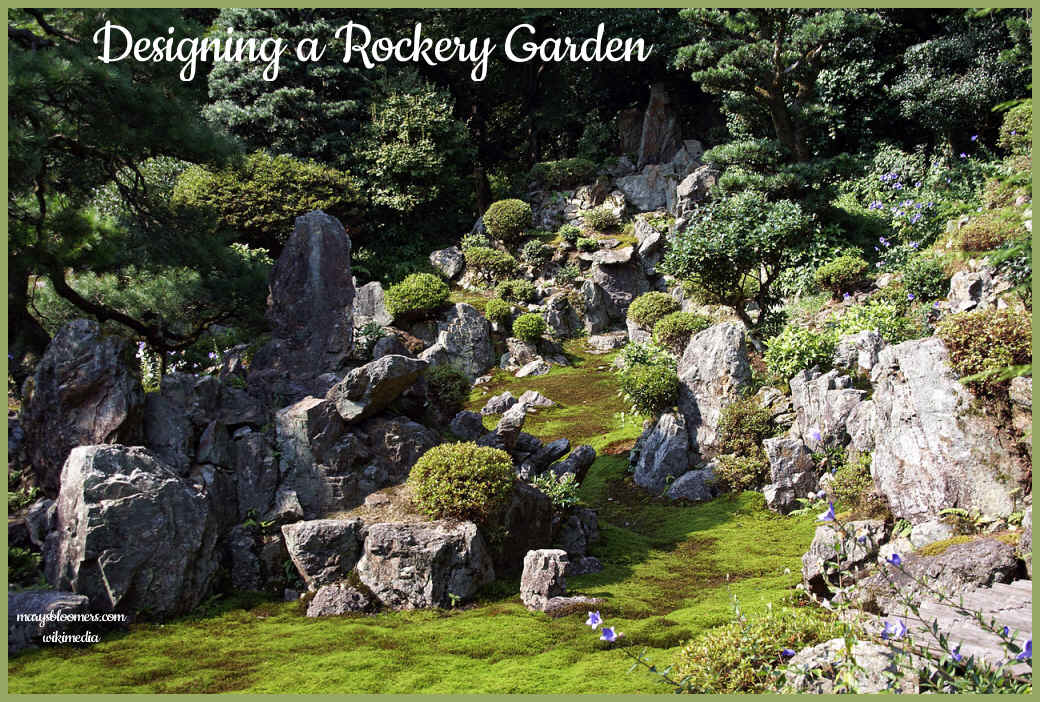 |
|
If you're lucky enough to have a rocky area on your property that you can't do anything with or remove, designing an ornamental rockery garden as part of it is a snap. And it's totally natural. Just add alpine plants and xeriscape plantings to bare spots.. But most of us need to import rocks from a quarry, or miniaturize the rockery so that you can move rocks around without a crane and suffering back injuries, to perfect an ornamental and Zen design. Rockeries are beautiful and are nature-inspired. Create one anywhere in your landscape, or create one in each corner and in the center of a larger landscape. As you begin your plan, bear in mind that rock isn't cheap. And it's pretty tedious to move around. You'll need help to move larger stones. A few tons of rock delivered from the quarry might not make a garden as big as you imagined it would be. When I do a big, expensive project, I don't wait around. I begin it by planning it, then making it happen a few sections at a time, even if it takes a few seasons to complete. Plants grow faster than you think, and that section will be beautiful while you wait to add to it. You can do the outline of your garden with rocks in different sizes and of various heights, and fill in as you go along, leaving spaces to pop your plants into. Or you can plant all of the plants with various sizes of space between, and add rocks to that as you go along. First round can be evergreen plants and ornamental grasses, which look great for several or all seasons. The garden doesn't have to be bare. It's a little bit of planning, but it looks great while you wait. The photo below is my idea of the perfect rockery. It includes gravel paths and uniform-sized rocks outlining several sections of garden, and includes all types of shrubs, trees and flowers. And the fairly level bed designs make it easy to care for. You can run drip irrigation hoses in each section to water it in times of drought, and you don't have to carry water in buckets or stand there posing with a garden hose for a half hour. Attach a splitter to your garden faucet, and run a few hoses at once, into different areas of your garden. Let the water drip irrigate for a while. You can leave the hoses in the garden if you are going to mulch with gravel. It's great for hiding things. This garden design can easily and beautifully replace your needy and uninteresting lawn.
|
|
|
Rockeries
are a bit different from rock gardens. Rockeries have a little slope or
height in the design, because of the placement of large rocks among
smaller rocks, used as the anchors of the garden. Rock gardens can be
completely flat, a space filled with gravel and a few rocks, mostly
medium sized. Many rockeries look natural because of the use of wildflowers. The flowers in the rock gardens look as though they grew there, with no help from you. Use of native plants and wildflowers create that untouched meadow or prairie look. |
|
|
 |
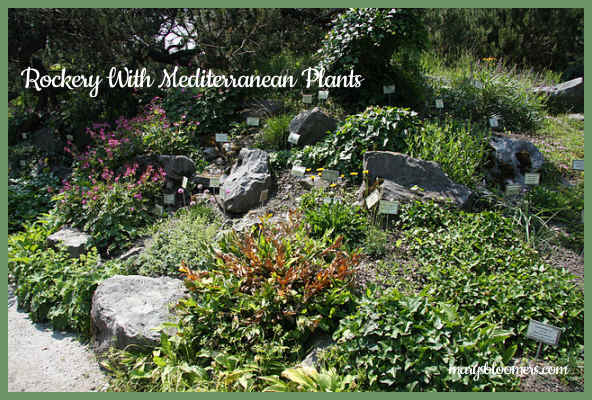 |
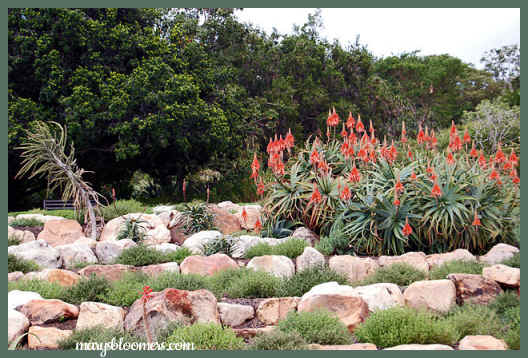 |
 |
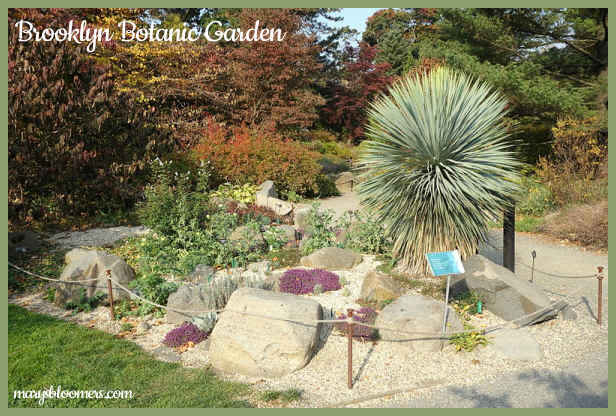 |
| A
rockery or an alpine garden is a small field or plot of ground designed
to feature and emphasize a variety of rocks, stones, and boulders.
Japanese rock garden designs incorporate gravel and evergreens in
interesting and soothing shapes. A Japanese
rock garden or Zen Garden is a type of Japanese garden, emphasizing
natural rocks and stone mulches. Small bushes and shaped trees are
planted in these gardens. The ground is covered in sand or gravel that
is raked into soothing patterns.
Zen Garden or Karesansui is a Zen Buddhist art form of a Japanese garden, expressing essential nature and dharma with stone, gravel, and space. Japanese rockeries have very little ornamentation, if any. The focus of the zen gardens is on the rocks, more than the plants.
|
 |
| The standard layout for a rock garden consists of a pile of aesthetically-arranged rocks in different sizes, with small gaps between them, in which plants are planted. Typically, plants found in rock gardens are small, though small trees and shrubs may be used to create a shaded area for a woodland rock garden. If used, they are often grown low to the ground to avoid obscuring the rocks. The plants found in rock gardens are usually species that flourish in well-drained, though poorly irrigated soil. Referred to as Alpine plants. |
|
|

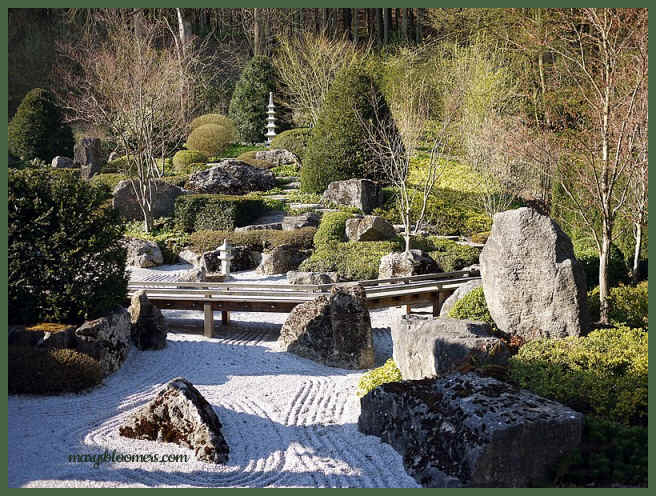
| Some rock gardens are designed and
built to look like natural outcrops of bedrock.
Stones are aligned to suggest a bedding plane, and plants are often used to conceal the joints between said stones. This type of rockery was popular in Victorian times. |
|
|
Rockeries can be made up of small pebbles, large rocks, hardy succulents, bright flowers, and any other rock and plant combinations. If you're new at rock gardens, try a 5 by 10 foot section to start with. If you want to expand eventually, make sure it is next to a space that can be dug up later. Make sure the flowerbeds between rocks will get proper drainage. Draw your design ideas out before starting. Getting the idea right in your head and on paper is the best way to make sure your plans remain in your head, once you begin the work. Since rocks aren't easy to move, get the placement planned before the hard labor begins. Most rockeries should contain plants that are drought-tolerant. But it's perfectly fine to mix types of plants. Grouping plants with those of similar needs makes it easier to care for the plants' watering and pruning needs.Wildflowers, ornamental grasses, and succulents are all good candidates for rockeries. If you want the rockery to look as though Nature had a hand in it, skip anything frilly and cottagey. Add in some mosses and ground cover to soften the landscape's sharp and hard edges. Creeping thymes come in a variety of scents, and all lemon thymes are pretty and fragrant. Many can actually be stepped on, without ill-effects. Include plants that pollinators love, and they will love you back with more beautiful flowers every year. Add little stone bowls among the plants or on the ledges in the garden for the wildlife to enjoy. Adding dwarf plants that produce berries can make it a bird habitat in no time. No need to have a cold, stark look to any of your gardens. Add a small water feature into the design to add more zen. And add a table and chair in the vicinity, if this garden is a focus of a zen retreat. |
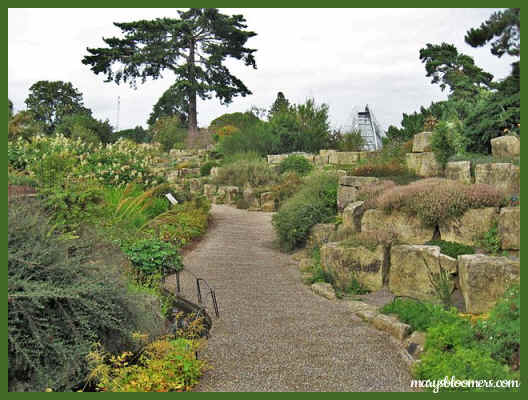
Rockery in Kew Gardens
Popular rockery plants - Jazz up a slope

| Find the perfect
location:
Before you build a rockery,
itís important to find the perfect location for your plants to thrive.
Alpine plants don't require a lot of water, but they do require maximum
light exposure. recycle and use unwanted bricks, tiles and paving slabs. If possible, use interestingly shaped rocks that are native to your area. Rocks with lichens or moss add texture and color. Once you have your large rocks, you can plan your rockery. Rockery garden design can be tricky, but the job is easier if you outline a plan on paper first. Be sure to take rock size into consideration, and then draw plants proportionately. A rockery should look like a natural, organic part of the landscape. When youíve designed a basic garden plan, purchase plants from a greenhouse or from a nursery that specializes in Alpine plants. Alpines grow best on mountainous slopes where thereís plenty of light and good drainage. rockeries continue to grow and change, looking more and more natural. Take a little time to perfect your rockery. Use a variety of smaller rocks to complement your larger ones. One of the principle rules of rock gardens is rock variety. Pick out stones and pebbles that will complement the larger rocks they are to surround.Take into account your color combinations. Mix darker pebbles and stones into the areas near your lighter large rocks and boulders. If certain sections are feeling like they might be too dark, find another small, light-colored rock that has a different texture from the larger rock. Lava rock makes for a great filler between larger light-colored rocks. It drains well.
Rockery Plants
Springís the perfect time to fill your rockery with plants that have an entire season to settle in before winter. Where you place the plants depends on their specific needs Donít plant water-loving plants alongside drought-tolerant plants. Place the plants into your garden
design plan. Put plants that need more care in easier-to-access spaces. The succulents and hardy wildflowers that don't need maintenance will be better on slopes or hard-to-access parts of the garden.
You can also plant a few dwarf conifers, like cedar, juniper or pine, which add year-round color to your rockery. Festucca "Elijah Blue" is beautiful in a rockery. I grow it everywhere, including raised beds and pots. They make 12 inch tall mounded, fluffy and non-spreading plants that add interest to the garden as focal points here and there, and as a contrast to flowering plants. They are evergreen, so your rockery will not be naked in the winter. The wheat-like stalks add interest for months, if you leave them on the plant. The blue-green grass sets off cool colors like pinks, whites and blues. Although rockeries are often located in full sunlight, you can build your rockery in partial shade. Select plants accordingly and consider the growing needs for each plant. Pebbles work great for making paths and preventing weeds from sprouting
Rockery Construction
Donít plant water-loving plants alongside drought-tolerant plants. Build a rockery at any time of year: aim for a few days after some heavy rainfall so that the soil is easier to manipulate. For each flower bed, create a pebble base of about 1 inch covered with sand that is about 2 to 3 in. thick. Top the base with soil and topsoil suitable to the plants you have selected. Preparing the site:Before you build a rockery, itís important to remove any existing weeds from the site because they can destabilize the structure. Place your rocks before anything else. Since the rocks are the hardest to adjust in a rockery garden, you want to get them right at the very beginning of your plan. Dig out some of the earth for big rocks to nestle into if they aren't particularly flat. Local rocks are best for your rockery because they will look the most natural. They can often be sourced from a reclamation yard or quarry. Below is a vertical rockery arrangement.
Begin with the largest rocks and place them so that they build to a peak, like a mountain. Face the rocks in a variety of directions. The large rocks can be stabilized with smaller rocks, set by adding a layer of weed-free topsoil. Bury your rocks and be sure each rock is buried to a soil depth of at least one-third to keep the rock securely in place. Space out your larger rocks and boulders, leaving room for smaller collections between. Avoid clumping the bigger rocks in one place, leaving the smaller ones to a side of their own.Once youíve placed all the larger rocks, itís time to build up the shape. Use small rocks and continue to layer with topsoil as you go. Then, arrange the smallest rocks in a horseshoe shape. This creates planting pockets. Once the large rocks are in place, arrange plants and smaller rocks. Set the plants around the rocks. Experiment and rearrange until you like the looks of the rockery, then secure the rocks and plant your plants. Finish by surrounding the plants and rocks with a layer of decorative gravel, small river rock or pebbles, or a combination of all types of small rocks.
Visit this page to read a vintage little 1912 book about creating authentic rock gardens.
Sources: Wikipedia |
Quick
Links
Content, graphics and design ©2020 marysbloomers.com/eyecandee.com
All rights reserved
This
site uses Watermarkly Software

